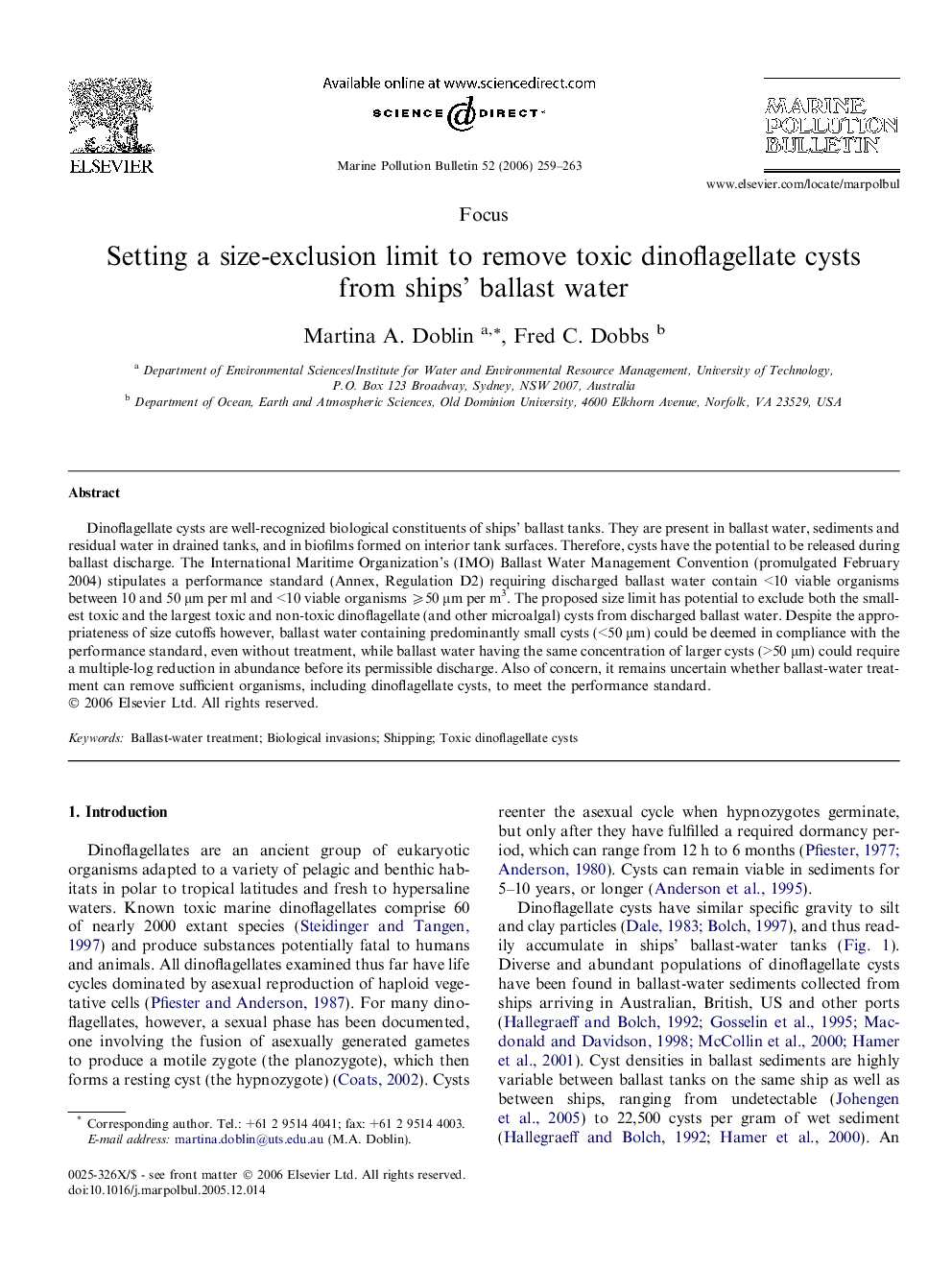| Article ID | Journal | Published Year | Pages | File Type |
|---|---|---|---|---|
| 4478139 | Marine Pollution Bulletin | 2006 | 5 Pages |
Dinoflagellate cysts are well-recognized biological constituents of ships’ ballast tanks. They are present in ballast water, sediments and residual water in drained tanks, and in biofilms formed on interior tank surfaces. Therefore, cysts have the potential to be released during ballast discharge. The International Maritime Organization’s (IMO) Ballast Water Management Convention (promulgated February 2004) stipulates a performance standard (Annex, Regulation D2) requiring discharged ballast water contain <10 viable organisms between 10 and 50 μm per ml and <10 viable organisms ⩾50 μm per m3. The proposed size limit has potential to exclude both the smallest toxic and the largest toxic and non-toxic dinoflagellate (and other microalgal) cysts from discharged ballast water. Despite the appropriateness of size cutoffs however, ballast water containing predominantly small cysts (<50 μm) could be deemed in compliance with the performance standard, even without treatment, while ballast water having the same concentration of larger cysts (>50 μm) could require a multiple-log reduction in abundance before its permissible discharge. Also of concern, it remains uncertain whether ballast-water treatment can remove sufficient organisms, including dinoflagellate cysts, to meet the performance standard.
